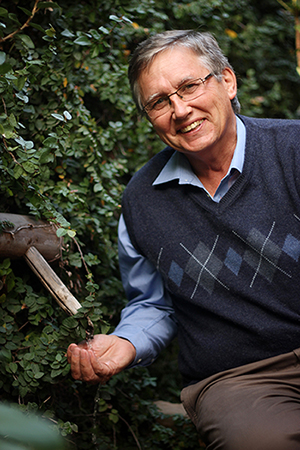New SADC Groundwater Management Institute will strengthen UFS footprint in Africa

Prof Danie Vermeulen
Photo: Anja Aucamp |
The new SADC Groundwater Management Institute (SADC GMI) will be fully operational in 2016, says Prof Danie Vermeulen, Head of the Institute for Groundwater Studies (IGS) at the University of the Free State.
The SADC GMI will have its offices in the IGS building on the Bloemfontein Campus. The UFS will be responsible for the financial side of the operation. The IGS, SADC member states, and the World Bank are co-operating on this project, which will build sustainable groundwater management across regional borders. Universities in the region tendered for the project, but the proposal by the IGS towered above the rest, Prof Vermeulen says.
The SADC GMI will strengthen the capacity of institutions to establish sustainable groundwater management. It will promote the management and development of groundwater infrastructures, and advance knowledge about national and trans-boundary groundwater. With the establishment of the new institute, research will be conducted, knowledge shared, and capacity built.
Prof Vermeulen says research has shown that groundwater is a primary source of water for more than 70% of the 250 million people in the drought-prone SADC region. The rapid expansion of commercial farming and industry is putting great pressure on water resources; 67% of all water is used in agriculture.
The new institute is an important instrument for the UFS to strengthen its footprint in Africa. “The SADC GMI is about distributing knowledge across the SADC region. It is important for the UFS to extend into Africa. The official collaboration between the UFS, the World Bank, and the SADC countries enables us to reach the goal,” Prof Vermeulen says.